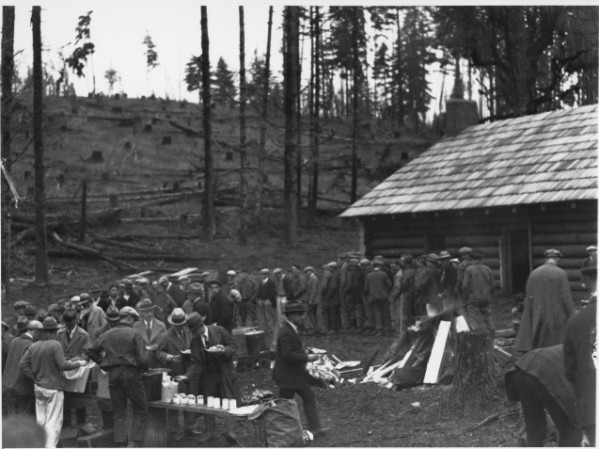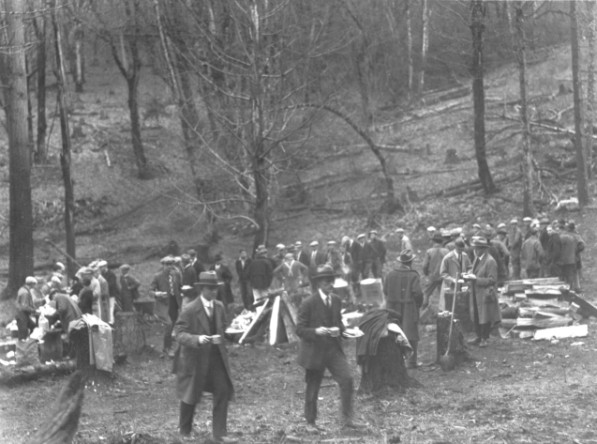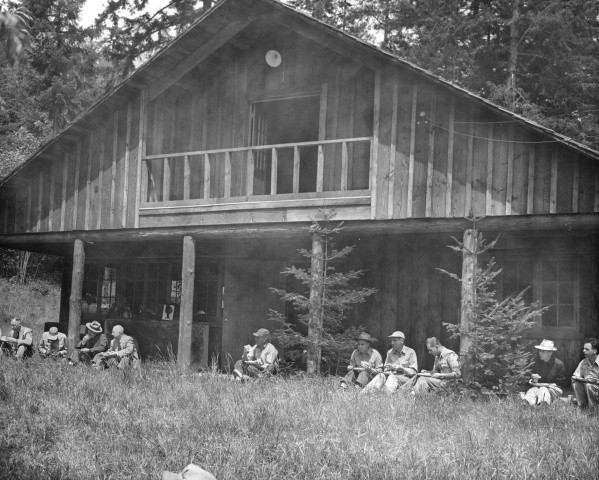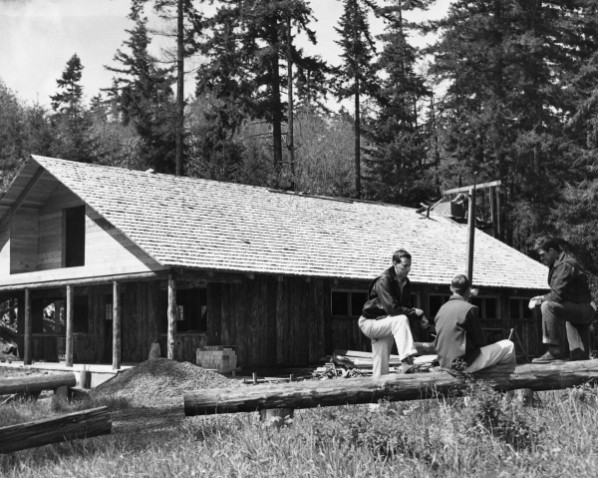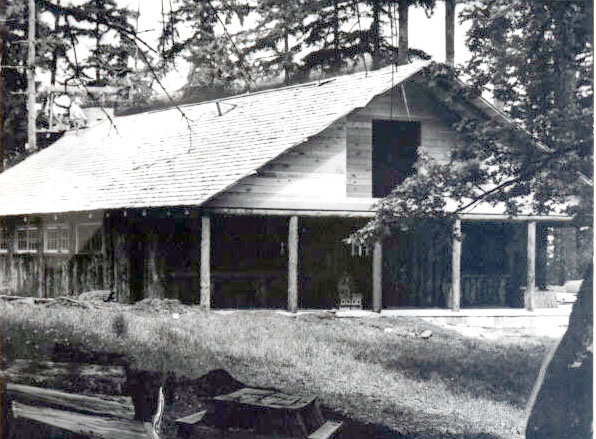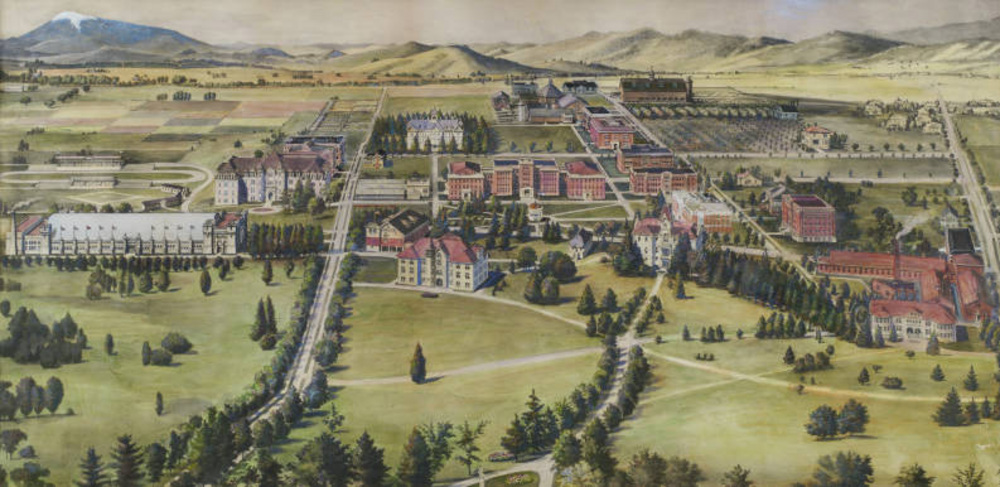Peavy Arboretum is part of Oregon State University’s research forests, serving as a teaching laboratory for the College of Forestry, a public recreational spot, and the gateway to OSU's McDonald-Dunn Forest.
Soon after its establishment in 1913, the Oregon Agricultural College (OAC) School of Forestry identified the need for an arboretum to serve as an outdoor laboratory. In 1924, Dean of Forestry George W. Peavy appointed a committee to raise funds and find “a tract of one hundred and sixty acres of land…not more than three or four miles distant from the college.” With $1,800 in pledges, the college purchased 341 acres eight miles north of Corvallis; 80 acres were designated as the arboretum.
The lands acquired for the arboretum had served as campsites for Lukiamiute Kalapuyans for at least 10,000 years before EuroAmerican settlement in the Willamette Valley. When the first white settlers arrived after 1845, the landscape included a few old-growth fir, oak, big-leaf maple, alder, and madrone in the foothills and hardwood trees along streams. The arboretum’s initial eighty acres had been logged in 1916. Replanting began in 1926 and continued for a few years after.
In 1925, the State of Oregon established the Clarke-McNary State Nursery at the arboretum, which produced seedlings for sale to farmers and later for reforestation in state-owned forests. That August, OAC forestry students constructed a cabin as a meeting place for the Forestry Club. On January 23, 1926, the arboretum, named for Dean Peavy, was dedicated for use as a classroom, research laboratory, and demonstration forest.
In 1928, the nursery distributed 89,000 seedlings to 435 farmers; species included black locust, green ash, yellow pine, redwood, and Port Orford cedar. The nursery closed in 1964, and OSU assumed management of the facility for use as its Forest Genetics Lab (the college was renamed Oregon State University in 1961). The School of Forestry's T.J. Starker established a “post farm” at the arboretum in 1928 for the study of logs suitable for use as fence posts and telephone poles.
The arboretum reached its present 181 acres by 1931; and by 1932, it reported having 117 tree species from around the world. The objective of the arboretum was to “give people of Oregon a chance to become acquainted with trees of other countries, to furnish students of forestry a laboratory, and...to try and find some species of tree that is better suited for lumber production in this region than any now growing here.” The arboretum now contains more than 150 plant species.
The federal government established Civilian Conservation Corps (CCC) Camp Arboretum at Peavy Arboretum on June 26, 1933, and by May 1935 thirty-nine buildings had been constructed. By the time the camp closed in 1942, its workers had constructed trails and roads throughout the arboretum and McDonald Forest; expanded the nursery; constructed Lake Cronemiller to provide irrigation water; and participated in reforestation and fire prevention work. Most of the CCC camp buildings were demolished or moved off site. One CCC building that remains is the sign shop; most recently it has been used for storage.
Another CCC-era building was used by the State Board of Forestry and Oregon State College for in-service projects. The building, which had a mess hall, dormitory space, and classrooms, burned in March 1948. It was reconstructed and used by the State Board of Forestry until 1970, when the School of Forestry donated the building to Oregon State University as a “gathering place for social events, meetings and planning sessions.” Known as Peavy Lodge, it served that function until 2007. The Forestry Club cabin burned in 1949 after a fraternity dance; forestry students built a new cabin in 1950, and it remains in use.
-
![Dedication of Peavy Arboretum, 1926]()
Dedication of Peavy Arboretum, 1926.
Dedication of Peavy Arboretum, 1926 Courtesy Oregon State University Archives, HC1008
-
![Dedication of Peavy Arboretum]()
Dedication of Peavy Arboretum.
Dedication of Peavy Arboretum Courtesy Oregon State University Archives, HC1008
-
![George Peavy near the arboretum, 1935]()
George Peavy near the arboretum, 1935.
George Peavy near the arboretum, 1935 Courtesy Oregon State University Archives, HC384
-
![Peavy Arboretum, evergreen seedlings, 1957]()
Peavy Arboretum, evergreen seedlings, 1957.
Peavy Arboretum, evergreen seedlings, 1957 Courtesy Oreg. Hist. Soc. Research Lib., neg. No.001381
-
![Picnic, Forestry Club Cabin, A.L. Strand sitting on left]()
Picnic, Forestry Club Cabin.
Picnic, Forestry Club Cabin, A.L. Strand sitting on left Courtesy Oregon State University Archives, P061:003
-
![Forestry Club Cabin, 1950]()
Forestry Club Cabin, 1950.
Forestry Club Cabin, 1950 Courtesy Oregon State University Archives, P061
-
![Forestry Club Cabin, 1950]()
Forestry Club Cabin, 1950.
Forestry Club Cabin, 1950 Courtesy Oreg. Hist. Soc. Research Lib., neg. no.0609
Related Entries
-
![George W. Peavy (1869-1951)]()
George W. Peavy (1869-1951)
George Wilcox Peavy was dean of the School of Forestry at Oregon State …
-
![Oregon State University]()
Oregon State University
Oregon State University (OSU) traces its roots to 1856, when Corvallis …
Map This on the Oregon History WayFinder
The Oregon History Wayfinder is an interactive map that identifies significant places, people, and events in Oregon history.
Further Reading
"Arboretum Secured for O.A.C. and State." The OAC Alumnus, May 1925, p. 201.
"Peavy Arboretum Forest Workshop." Oregon State Monthly, April 1932, p. 8.
Hylton, Lindon B. Peavy Arboretum: An Archaeological and Historical Investigatoin of a Willamette Valley Landscape. Master's thesis, Oregon State University, Corvallis, 1999.

